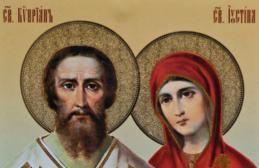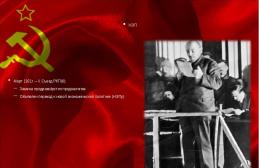This year I had a chance to put (abbreviated as PDA). The customer really wanted it. And he flatly refused Kuznetsov’s variants of a bell-type oven with a bread chamber. He scoured the internet for a long time and found her, my dear. He liked her so much that he didn’t want to hear about anyone else. Well, okay, agreed. I made this stove for him. I've heard and read about them before, but I never got around to putting them in.
The oven is like a two-bell oven, hearth, that is, without an ash pan and a blower. Air is supplied to the firebox through the firebox door. Hearth stoves are found in life. They burn more quietly and the wood in them burns longer. And although I myself am more of a supporter of stoves with an ash pit, I also look at these with respect. The Russian stove, the prototype of bell-type stoves, also has bottom combustion. True, you have to stir the burning logs from time to time so that they burn more evenly, but this is not very burdensome.
Furnace structure
Since there is no ash pan in the stove, and the firebox is located quite low, above the firebox, in addition to the afterburning chamber for flue gases (also the cooking chamber), you can also place a cast iron hob at a comfortable height. As a result, the oven has two cavities for cooking: an afterburning chamber with a sealed door and an open cavity above the hob. However, since the ptita is not traditionally located along the stove, but across it, this cavity turns out to be more closed from the outside space and therefore can store heat longer and, therefore, transfer it more evenly to the room and the pan in which you decide to cook your dinner.
The afterburner serves primarily to improve the combustion of wood and increase the efficiency of the stove itself. Flue gases through the gap (in fact, it can be called the lower high furnace), located at the rear wall, move to the second tier, where they burn out due to the high temperature of the chamber walls and the hearth - the horizontal overlap between the firebox and the afterburning chamber. In order for the afterburning effect to be stronger, both the firebox and afterburner chamber made of fireclay (fire-resistant brick), which heats up faster and works in this case as a catalyst, allowing you to burn out those organic fractions that did not burn out in the firebox. The result is an additional output of thermal energy, and the flue gases themselves are cleaner - ideally carbon dioxide and water. In practice, of course, it is problematic to achieve such cleanliness, but in any case less soot is formed. As a result, the stove has to be cleaned less often, the atmosphere is less polluted, and the efficiency of the stove increases.
From afterburners flue gases enter two outlets ( upper higho), symmetrically located on the sides of the chamber closer to its door. So they end up in the first cap, where they pass through a traditional twist into the second cap and from there they fly out into the chimney.
Top afterburners overlaps the hob, which also receives enough heat to become an independent cooking device.
According to reviews from the owners of such ovens, the afterburner chamber does an excellent job of burning gases and baking bread, as well as preparing other dishes that require long-term heat treatment - for example, simmering porridge.
True, in my case, the details of its use are not yet known to me - after completing the masonry, I only did a test kindling in the presence of the customer to check the draft. But if there are details of her work, I will definitely tell you.
To be honest, I liked the stove: it was easy to install, and the logic of its design was very convincing and easy to implement. And this means a lot - it’s not always easy to find a solution that, okay and without unnecessary complications and bells and whistles, allows you to build a competent stove.
About where these stoves came from - another time. The story is interesting and it emanates such hoary antiquity that you inevitably begin to feel a sacred awe of the wisdom of our ancestors, who understood life’s laws of Nature so much that we still cannot surpass them. And there is always something to learn from our ancestors.
According to the stories of users of this particular option, it is good in all respects.
Or a remake five years later. Or what kind of stoves are in Bashkir villages.
Before rework After

About the beginning of the alteration in the summer. Now look at what the request to change the door resulted in. We won’t fall for this anymore, it’s better to build again.
The stove was built according to a project from the magazine “Advice of Professionals”, I don’t remember what year it was. It is based on a T-shaped design, the smoke from the firebox first rises into a blank hood in the middle (located in the right side wall, where the cleaning door is below), then descends and diverges through two lifting channels, which converge above the hood ceiling and go into the chimney. I simply placed the distant channel in the side of the fireplace, and then added a fireplace.
So, I decided to try the Aryan, the oven of the ancient Aryans, as they call it. Although what does this have to do with the Aryans, and even the ancient ones, for the life of me I don’t understand. Once the customer’s sister was visiting; according to her, such stoves are in almost every yard in Bashkir villages. But the Bashkirs in the villages had heard little about the ancient Aryans. But this is a topic for a separate expedition; in the spring we will travel to Bashkiria again...
The Aryan oven consists of two chambers, the lower one is the combustion chamber, and the upper one is the cooking chamber. The wood burns below, the smoke goes to the top and heats it, and it remains cleaner than in the Russian one... although this is doubtful, the vault is still smoked, but underneath - without ash. And you can cook in it simultaneously with the firebox. Presumably, no data yet...
I lined the lower firebox on edge, threw the hob onto... into the barn, and covered the firebox with three rows, leaving an exit into the hood (to the right) and into the upper chamber (up). By the way, after heating, you can bake pies in this firebox, after raking out the coals. This is what they do in Bashkir villages, so they ask them to make the firebox bigger, bigger...

Yes - I pulled channels for secondary air under the floor from the blower and brought them out behind the back wall of the firebox under the hole in the ceiling. Just in case (for afterburning unburned fuel particles?)

What this gave is also not yet clear. No data, additional tests and experiments are required.

But when the hole is open, the smoke will go up, but it won’t go to the side, into the cap or under the cover. There is no way you can put a valve there, so without further ado I decided to just plug it with a brick. When the brick is closed, the oven operates in Dutch mode:

With an open brick - in Aryan mode:

An open cleaning door leads to the chimney of the fireplace located at the back, and accordingly into the chimney, so in the Aryan mode, you can tightly close the damper of the mouth so that the smoke is not even allowed to splash out; it will go into the chimney of the fireplace.
Well, if you close the brick again and light a fire right in the upper chamber, then the oven switches to Russian mode:

It turns out a Russian-Aryan Dutch woman with a fireplace!
The customer asked to put a cast-iron sheet on the Russian floor and hearth so as not to stain the brick with grease and it would be more convenient to move the pots on a level surface. This is what they do in Bashkir villages, and there is a reason for it.
Inserts with monograms at the top are nothing more than inserted bricks of cleaning holes, letter B 
- the upper horizontal channel above the cap, just a curl - in front of the Russian hog. I decided that cast iron doors would be out of place there. There are no channels on the left; there is a shelf there, which in winter will be littered with wet woolen socks and mittens, and the inserts are purely decorative, for symmetry.
Well, on the keystone of the arch is the customer’s monogram:

After a little modification it will become my personal mark. Rumor has it that he has already earned it)))
The test fire didn't show much. There is no direct movement in the stove, so when lighting with the fire door open, smoke is observed. However, this was the case before the alteration. When the temperature of the flue gases increases, the smoking stops. As can be seen in the video:
In Bashkir villages, stoves are heated like this: the firebox is filled to the top with birch logs, and below is a piece of birch bark, which is set on fire. Just birch bark causes the birch bark on the logs to catch fire, then the logs themselves, the firebox is closed and they remember about it an hour or two later, when the wood burns out. Therefore, the above drawback will not be noticeable.
I also expected a different result from the Aryan. As I saw in the video on YouTube, in the upper chamber the flame blossomed like a flower, and rare sparks flew out here. Of course, we didn’t lay a full firebox, but a few logs, and they didn’t burn for long (we had to get home through the snowdrifts before dark), and with a full fire, the result might be different.
In general, a stove requires more careful and thoughtful testing, experimentation, and research. The owners will take care of this, and we will also catch up in the spring.
Thank you for your attention!
The design of the Arkaim stove itself is interesting. In it, when combining the hearth and the well, a natural and strong air draft was created. The air entering the well column (in the illustration below) was cooled by the water located in the well column and entered the firebox. It is known that melting bronze requires a fairly high temperature, which cannot be achieved without supplying a large volume of air to the combustion site.
"The ancient Aryans were provided with sewerage. Moreover, each dwelling had a well, a stove and a small domed storage. Why? Everything ingenious is simple. We all know that from a well, if you look into it, there is always cool air coming from it. So, in In the Aryan stove, this cool air, passing through the old pipe, created a draft of such force that it made it possible to melt bronze without the use of bellows! Such a furnace was in every home, and the ancient blacksmiths could only hone their skills by competing in this art! leading to the storage facility, ensured a lower temperature in it." (Rites of Love, chapter Arkaim - Academy of the Magi, p. 46).
There was a well next to the furnace, and the furnace vent was connected to the well through an air-blowing channel built in the ground. Experiments conducted by archaeological scientists showed that the Arkaim “miracle furnace” can maintain a temperature sufficient not only to melt bronze, but also to smelt copper from ore (1200-1500 degrees!). Thanks to the air duct connecting the furnace with a five-meter deep well adjacent to it, a draft arises in the furnace, providing the required temperature. Thus, the ancient inhabitants of Arkaim brought into reality the mythological ideas about water giving birth to fire.
Although the practical production of a Vedrus stove is more complicated than any ordinary stove, the result of its work will be the solution to virtually all the energy problems of the estate, including the generation of electricity. Its efficiency will not be inferior to the famous Spirin stove (remember, in whose stove all the pots melted?) and maybe even surpass it if we correctly restore the principle of its operation. If you forgot, I’ll quote a little from this publication by A. Elakhov:
So, I think that in Spirin’s oven the same principle was used that the Magi of Arkaim used in their miracle ovens. What I mean is that the reason for the colossal heating of the furnace is the cold air supplied from below into the furnace. There is no absurdity here, since the supply of cold air was also used in ancient smelting furnaces in Europe:
A quick method of converting cast iron into steel was developed in 1856 by the Englishman G. Bessemer. He proposed blowing air through molten liquid iron in the hope that the oxygen in the air would combine with the carbon and carry it away as a gas. Bessemer was only afraid that the air would cool the cast iron. In fact, the opposite happened - the cast iron not only did not cool down, but heated up even more. Unexpected, isn't it? And this is explained simply: when oxygen in the air combines with various elements contained in cast iron, for example, silicon or manganese, a considerable amount of heat is released.
By the way, our 18th century Russian scientist Mikhailo Lomonosov came closest to the secret of the miracle stoves. While visiting the Ural mines, he noticed the cool air coming from the mines and became interested in this phenomenon. This is what the same Vladimir Efimovich Grum-Grzhimailo, whose work Alexander Spirin found in the attic, writes about him: calling Lomonosov his predecessor, he wrote in the preface to his book:
“In his dissertation “On the free movement of air noted in mines” (1742), he gave a crystal clear idea about the movement of air in mines and chimneys. His theory of squeezing out warm smoke by heavy, cold, outside air was perfectly understood by the whole world. But on This is where the matter stopped. In further attempts to explain the movement of gas in furnaces, the word “draft” was confused, which is grammatically absurd, because the verb to pull implies a direct connection between the force and the object that is being pulled. There is no draft in furnaces and chimneys: there is the squeezing out of warm air of smoke. heavy air, as M.V. correctly pointed out, who never used the word “thrust”.
In this case, my question arises: what force causes the cold air to move upward? For example, take the case of two communicating vessels containing water. You can take a flexible building level. No matter how we change the height of either end of the hose, the water in both vessels is always at the same level. Can the same thing happen if the communicating vessels contain not a liquid, but a gas? Yes, if the diameter of the vessels is the same. But if one vessel has a diameter of a decimeter, and another vessel has a diameter of a meter, will the gases occupy the same level relative to the surface of the earth? Indeed, in this case it is necessary to take into account the atmospheric pressure on the upper area of the gas. Let's take a Vedrus well connected by a channel to a stove. The diameter of the outlet channel is 8-12 cm, the cross-section of the well channel is equal to a square meter. Obviously, the pressure of the atmospheric column into the well will be greater than the pressure of the atmospheric column into the outlet channel, plus the weight of the cold air located in the well itself, which means that the cold air will be quietly squeezed into the combustion space of the furnace, fulfilling the purpose of the ash.
It turns out that draft, the presence of which in modern stoves was so valued by stove-makers, is a harmful phenomenon in stoves with free movement of gases, since there is an uncontrolled release of valuable heat into the surrounding space and its irreversible loss of up to 80%, which also means that up to 80% of the forest cut down and burned in vain. The soil and atmosphere are disturbed, as substances harmful to health remain due to incomplete combustion of fuel, the content of carbon dioxide in the air increases, and the greenhouse effect intensifies. To eliminate the harmful phenomenon of draft in a Vedrus stove, the outlet channel from the firebox must be arranged in the lower part, in the cold air zone. Thus, hot gases and hot air circulating in the upper compartment of the furnace are not removed to the outside, but accumulate increasing heat. This is where the temperature that melts metals comes from. A mixture of cool air and lower hot gases captured by the flow is removed from the combustion chamber. Having reached the top of the pipe, the gases are finally cooled and thrown out barely warm, in fact, as three scientists from the Yaroslavl Research Institute recorded while studying Alexander Spirin’s furnace
Of the modern stove designers who use the scientific developments of Professor Grum-Grzhimailo, I know only Igor Kuznetsov, but he, of course, does not use the well principle in his developments, although he has achieved high efficiency in his stove designs. Here I will give the basic operating principle of his free gas movement (FGM) furnaces.
The system of free movement of gases (FGM) in heat generators as interpreted by I.V. Kuznetsov. Heat generators are built according to the formula “The lower tier and the firebox are combined into a single space and make up the lower hood.” The essence of the formula. We are talking about burning fuel in a firebox located in a bell and optimally using the thermal energy released. The essence of the concept: to obtain the maximum amount of heat from fuel when it is burned; use the resulting heat to the maximum extent; The design of the heat generator must meet functional requirements and ensure maximum heat transfer.
The cap is a vessel turned upside down. Let's fill the cap with a portion of hot air. The hot air, as lighter air, will rise upward, displace the cold heavy air from the bell, and will remain there until it gives up its heat to the walls of the bell. As a result, we obtain a system that accumulates the heat of hot air in a limited volume. The movement of hot air in the hood occurs due to the natural forces of nature and does not require external energy. If you pass a stream of hot air through the lower zone of the hood, the hood accumulates its heat. The heat of the hot air will be transferred to the walls of the hood and the heat exchanger placed inside the hood, and excess heat (cooled air) will be released outside. The heat exchanger can be water boiler registers, an air heating heater, a retort for fuel gasification, etc.
A moving gas flow in a heat generator with any convective system transfers thermal energy and combustion products. To find out the difference in the mechanism of gas flow movement in the PDG (forced movement) and LDH systems, let’s imagine that the heat source is an electric heater. In this case, there is no need to remove combustion products. In an LDH system, for example a two-tier bell furnace, thermal energy is transferred due to the natural forces of nature, even with the pipe valve closed (without pipe draft). Heat transfer occurs over time, and if the hood and heat exchanger do not have time to absorb all the heat of the electric heater, then its excess in the form of exhaust hot air will flow into the second hood. In the second bell, the transfer of thermal energy occurs according to the same pattern as in the lower bell. This process of transferring thermal energy reflects the essence of the name of the system, “free movement of gases (FMG)”. To remove combustion products, if the source of thermal energy is fuel combustion, a pipe draft is required. It should be noted that the movement of gases inside the bell will be turbulent.
Unlike the LDH system, in the PDH system the transfer of thermal energy is possible only in the presence of pipe draft.


Ecology of knowledge. Educational: The article describes the interesting design of the Arkaim stove. In it, when combining the hearth and the well, a natural and strong air draft was created. The air entering the well column (in the illustration below) was cooled by the water located in the well column and entered the firebox.
The article describes the interesting design of the Arkaim stove. In it, when combining the hearth and the well, a natural and strong air draft was created. The air entering the well column (in the illustration below) was cooled by the water located in the well column and entered the firebox.
It is known that melting bronze requires a fairly high temperature, which cannot be achieved without supplying a large volume of air to the combustion site.
"The ancient Aryans were provided with sewerage. Moreover, each dwelling had a well, a stove and a small domed storage. Why? Everything ingenious is simple. We all know that if you look into it, there is always cool air coming from a well.
So, in the Aryan stove, this cool air, passing through an earthen pipe, created a draft of such force that it made it possible to melt bronze without the use of bellows! There was such a stove in every home, and the ancient blacksmiths could only hone their skills by competing in this art! Another earthen pipe leading to the storage facility ensured a lower temperature in it." (Rites of Love, chapter Arkaim - Academy of the Magi, p. 46).
There was a well next to the furnace, and the furnace vent was connected to the well through an air-blowing channel built in the ground. Experiments conducted by archaeological scientists showed that the Arkaim “miracle furnace” can maintain a temperature sufficient not only to melt bronze, but also to smelt copper from ore (1200-1500 degrees!). Thanks to the air duct connecting the furnace with a five-meter deep well adjacent to it, a draft arises in the furnace, providing the required temperature. Thus, the ancient inhabitants of Arkaim brought into reality the mythological ideas about water giving birth to fire.
A quick method of converting cast iron into steel was developed in 1856 by the Englishman G. Bessemer. He proposed blowing air through molten liquid iron in the hope that the oxygen in the air would combine with the carbon and carry it away as a gas. Bessemer was only afraid that the air would cool the cast iron. In fact, the opposite happened - the cast iron not only did not cool down, but heated up even more. Unexpected, isn't it? And this is explained simply: when oxygen in the air combines with various elements contained in cast iron, for example, silicon or manganese, a considerable amount of heat is released.
By the way, our 18th century Russian scientist Mikhailo Lomonosov came closest to the secret of the miracle stoves. While visiting the Ural mines, he noticed the cool air coming from the mines and became interested in this phenomenon. This is what the same Vladimir Efimovich Grum-Grzhimailo, whose work Alexander Spirin found in the attic, writes about him: calling Lomonosov his predecessor, he wrote in the preface to his book:
“In his dissertation “On the free movement of air noted in mines” (1742), he gave a crystal clear idea about the movement of air in mines and chimneys. His theory of squeezing out warm smoke by heavy, cold, outside air was perfectly understood by the whole world. But on This is where the matter stopped. In further attempts to explain the movement of gas in furnaces, the word “draft” was confused, which is grammatically absurd, because the verb to pull implies a direct connection between the force and the object that is being pulled. There is no draft in furnaces and chimneys: there is the squeezing out of warm air of smoke. heavy air, as M.V. correctly pointed out, who never used the word “thrust”.
The question arises: what force causes cold air to move upward? For example, take the case of two communicating vessels containing water. You can take a flexible building level. No matter how we change the height of either end of the hose, the water in both vessels is always at the same level. Can the same thing happen if the communicating vessels contain not a liquid, but a gas?
Yes, if the diameter of the vessels is the same. But if one vessel has a diameter of a decimeter, and another vessel has a diameter of a meter, will the gases occupy the same level relative to the surface of the earth? Indeed, in this case it is necessary to take into account the atmospheric pressure on the upper area of the gas. Let's take a Vedrus well connected by a channel to a stove.
The diameter of the outlet channel is 8-12 cm, the cross-section of the well channel is equal to a square meter. Obviously, the pressure of the atmospheric column into the well will be greater than the pressure of the atmospheric column into the outlet channel, plus the weight of the cold air located in the well itself, which means that the cold air will be quietly squeezed into the combustion space of the furnace, fulfilling the purpose of the ash.
It turns out that draft, the presence of which in modern stoves was so valued by stove-makers, is a harmful phenomenon in stoves with free movement of gases, since there is an uncontrolled release of valuable heat into the surrounding space and its irreversible loss of up to 80%, which also means that up to 80% of the forest cut down and burned in vain. The ecology of the soil and atmosphere is disrupted, as substances harmful to health remain due to incomplete combustion of fuel, the content of carbon dioxide in the air increases, and the greenhouse effect intensifies.
To eliminate the harmful phenomenon of draft in a Vedrus stove, the outlet channel from the firebox must be arranged in the lower part, in the cold air zone. Thus, hot gases and hot air circulating in the upper compartment of the furnace are not removed to the outside, but accumulate increasing heat. This is where the temperature that melts metals comes from. A mixture of cool air and lower hot gases captured by the flow is removed from the combustion chamber. Having reached the top of the pipe, the gases are finally cooled and thrown out barely warm, in fact, as three scientists from the Yaroslavl Research Institute recorded while studying Alexander Spirin’s furnace.
Of the modern stove designers who use the scientific developments of Professor Grum-Grzhimailo, I know only Igor Kuznetsov, but he, of course, does not use the well principle in his developments, although he has achieved high efficiency in his stove designs. published
clay oven Arkaim The design of the Arkaim stove itself is interesting. In it, when combining the hearth and the well, a natural and strong air draft was created. The air entering the well column (in the illustration below) was cooled by the water located in the well column and entered the firebox. It is known that melting bronze requires a fairly high temperature, which cannot be achieved without supplying a large volume of air to the combustion site.
Clay Aryan oven Arkaim
"The ancient Aryans were provided with sewerage. Moreover, each dwelling had a well, a stove and a small domed storage. Why? Everything ingenious is simple. We all know that from a well, if you look into it, there is always cool air coming from it. So, in In the Aryan stove, this cool air, passing through an earthen pipe, created a draft of such force that it made it possible to melt bronze without the use of bellows! Such a stove was in every home, and the ancient blacksmiths could only hone their skills by competing in this art. Another earthen pipe! leading to the storage facility, ensured a lower temperature in it." (Rites of Love, chapter Arkaim - Academy of the Magi, p. 46). 
Although the practical production of a Vedrus stove is more complicated than any ordinary stove, the result of its work will be the solution to virtually all the energy problems of the estate, including the generation of electricity. Its efficiency will not be inferior to the famous Spirin stove (remember, in whose stove all the pots melted?) and maybe even surpass it if we correctly restore the principle of its operation.
If you forgot, I’ll quote a little from this publication by A. Elakhov:
“Once they told me the following story. Just before the Great Patriotic War, our government announced a competition for the best economical stove. It’s understandable: almost all of Russia was heated with wood, how much wood flew into the chimneys! The most prominent minds of the Motherland took part in the competition. The best The projects were selected and compiled into a book, but they did not come to fruition. The war interfered.
At the end of the forties, one stove maker returned to his native village and first decided to turn over the stove to the old woman. I climbed into the attic and found a yellowed book with unfulfilled projects. I chose the project of Grzhimailo, a specialist in the field of ferrous metallurgy. The stove was folded, dried, and heated. The old woman put some cast iron in the oven and went to milk the cow. She returned, poked her head towards the stove, but there were no cast irons. Cast iron melted.
I admit, I believed that story at first, until I met in Kirillov with a general store loader, Alexander Pavlovich Spirin. He showed me a stove of his own design, in which if the pots don’t melt, then the next day you can bake pies. Spirin’s stove was so amazing that if I hadn’t seen it with my own eyes and felt it with my own hands, I wouldn’t have believed it. The stove burned without smoke. Not at all. And there were many other amazing things about her."
So, I think that in Spirin’s oven the same principle was used that the Magi of Arkaim used in their miracle ovens. What I mean is that the reason for the colossal heating of the furnace is the cold air supplied from below into the furnace. There is no absurdity here, since the supply of cold air was also used in ancient smelting furnaces.
By the way, our 18th century Russian scientist Mikhailo Lomonosov came closest to the secret of the miracle stoves. While visiting the Ural mines, he noticed the cool air coming from the mines and became interested in this phenomenon. This is what the same Vladimir Efimovich Grzhimailo, whose work Alexander Spirin found in the attic, writes about him: calling Lomonosov his predecessor, he wrote in the preface to his book:
“In his dissertation “On the free movement of air noted in mines” (1742), he gave a crystal clear idea about the movement of air in mines and chimneys. His theory of squeezing out warm smoke by heavy, cold, outside air was perfectly understood by the whole world. But on This is where the matter stopped. In further attempts to explain the movement of gas in furnaces, the word “draft” was confused, which is grammatically absurd, because the verb to pull implies a direct connection between the force and the object that is being pulled. There is no draft in furnaces and chimneys: there is the squeezing out of warm air of smoke. heavy air, as M.V. correctly pointed out, who never used the word “thrust”.
In this case, my question arises: what force causes the cold air to move upward? For example, take the case of two communicating vessels containing water. You can take a flexible building level. No matter how we change the height of either end of the hose, the water in both vessels is always at the same level. Can the same thing happen if the communicating vessels contain not a liquid, but a gas? Yes, if the diameter of the vessels is the same. But if one vessel has a diameter of a decimeter, and another vessel has a diameter of a meter, will the gases occupy the same level relative to the surface of the earth? Indeed, in this case it is necessary to take into account the atmospheric pressure on the upper area of the gas. Let's take a Vedrus well connected by a channel to a stove. The diameter of the outlet channel is 8-12 cm, the cross-section of the well channel is equal to a square meter. Obviously, the pressure of the atmospheric column into the well will be greater than the pressure of the atmospheric column into the outlet channel, plus the weight of the cold air located in the well itself, which means that the cold air will be quietly squeezed into the combustion space of the furnace, fulfilling the purpose of the ash.
It turns out that draft, the presence of which in modern stoves was so valued by stove-makers, is a harmful phenomenon in stoves with free movement of gases, since there is an uncontrolled release of valuable heat into the surrounding space and its irreversible loss of up to 80%, which also means that up to 80% of the forest cut down and burned in vain. The ecology of the soil and atmosphere is disrupted, as substances harmful to health remain due to incomplete combustion of fuel, the content of carbon dioxide in the air increases, and the greenhouse effect intensifies. To eliminate the harmful phenomenon of draft in a Vedrus stove, the outlet channel from the firebox must be arranged in the lower part, in the cold air zone. Thus, hot gases and hot air circulating in the upper compartment of the furnace are not removed to the outside, but accumulate increasing heat. This is where the temperature that melts metals comes from. A mixture of cool air and lower hot gases captured by the flow is removed from the combustion chamber. Having reached the top of the pipe, the gases are finally cooled and thrown out barely warm, in fact, as three scientists from the Yaroslavl Research Institute recorded while studying Alexander Spirin’s furnace
Of the modern stove designers who use the scientific developments of Professor Grum-Grzhimailo, I know only Igor Kuznetsov, but he, of course, does not use the well principle in his developments, although he has achieved high efficiency in his stove designs. Here I will give the basic operating principle of his free gas movement (FGM) furnaces.
The system of free movement of gases (FGM) in heat generators as interpreted by I.V. Kuznetsov. Heat generators are built according to the formula “The lower tier and the firebox are combined into a single space and make up the lower hood.” The essence of the formula. We are talking about burning fuel in a firebox located in a bell and optimally using the thermal energy released. The essence of the concept: to obtain the maximum amount of heat from fuel when it is burned; use the resulting heat to the maximum extent; The design of the heat generator must meet functional requirements and ensure maximum heat transfer.
The cap is a vessel turned upside down. Let's fill the cap with a portion of hot air. The hot air, as lighter air, will rise upward, displace the cold heavy air from the bell, and will remain there until it gives up its heat to the walls of the bell. As a result, we obtain a system that accumulates the heat of hot air in a limited volume. The movement of hot air in the hood occurs due to the natural forces of nature and does not require external energy. If you pass a stream of hot air through the lower zone of the hood, the hood accumulates its heat. The heat of the hot air will be transferred to the walls of the hood and the heat exchanger placed inside the hood, and excess heat (cooled air) will be released outside. The heat exchanger can be water boiler registers, an air heating heater, a retort for fuel gasification, etc.
A moving gas flow in a heat generator with any convective system transfers thermal energy and combustion products. To find out the difference in the mechanism of gas flow movement in the PDG (forced movement) and LDH systems, let’s imagine that the heat source is an electric heater. In this case, there is no need to remove combustion products. In an LDH system, for example a two-tier bell furnace, thermal energy is transferred due to the natural forces of nature, even with the pipe valve closed (without pipe draft). Heat transfer occurs over time, and if the hood and heat exchanger do not have time to absorb all the heat of the electric heater, then its excess in the form of exhaust hot air will flow into the second hood. In the second bell, the transfer of thermal energy occurs according to the same pattern as in the lower bell. This process of transferring thermal energy reflects the essence of the name of the system, “free movement of gases (FMG)”. To remove combustion products, if the source of thermal energy is fuel combustion, a pipe draft is required. It should be noted that the movement of gases inside the bell will be turbulent.
Unlike the LDH system, in the PDH system the transfer of thermal energy is possible only in the presence of pipe draft.








